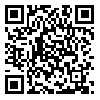BibTeX | RIS | EndNote | Medlars | ProCite | Reference Manager | RefWorks
Send citation to:
URL: http://jabs.fums.ac.ir/article-1-459-en.html

 , Tahereh Gholami *2
, Tahereh Gholami *2 
 , Rashid Heidari Moghaddam3
, Rashid Heidari Moghaddam3 
 , Mehdi Akbarzadeh4
, Mehdi Akbarzadeh4 
 , Majid Motamedzadeh3
, Majid Motamedzadeh3 

2- Department of Public Health, Fasa University of Medical Sciences, Fasa, Iran. ,
3- Ergonomics Department, School of Public Health, Hamedan University of Medical Sciences, Hamedan, Iran.
4- Statistics Department, Hamedan University of Medical Sciences, Hamedan, Iran.
Background: In many workplaces, many factors exist as sources of stress such as environmental and physical factors, (eg, noise, overcrowding, poor lighting), human factors (conflict with another person), organizational factors (such as workload, Incorrect policy). if the person is not able to deal effectively with them, undergoing several physical and behavioral and psychological symptoms are happen. While prolonged stress may cause decreased job satisfaction and burnout that results is boredom, apathy, loss of effectiveness, fatigue, frustration, and even disappointment. Burnout in nursing profession, is a serious problem health care and has negative effects on clinical outcomes. The aim of this study was to assess the level of burnout ,job demand - control and also The relationship between burnout and job demand - control among nurses. Methods: in this cross- sectional study, 415 randomly selected nurses from hospital of Hamedan university of medical sciences participated. The Persian version of job content questionnaire(P-JCQ) and maslach burnout inventory used for data collection. Using SPSS16 software , descriptive statistics and multiple logestic regression and x2 test were applied for data analysis. Results: the finding of present study indicated that burnout levels were relatively high. Mean and standard deviation score for Emotional exhaustion, Depersonalization and Reduced personal accomplishment dimensions were (25.3±12.42),(5.91±5.1),(33.30±9.59) respectively. About 51% of nurses reported high job demands and 57% of them had high control over their tasks. About 30% of nurses reported that their job were active, 21% passive, 22% high strain and 27% low strain. And غیر فعال job supported reduced personal accomplishment dimension of burnout (OR=0.433). Conclusion: Based on the results of the study should be stated that if job control and psychological job demand were high, nurses will not be prone to burnout. And also occurrence of burnout in reduced personal accomplishment dimension among nurses who reported their job had low psychosocial demand and low control, was more than others.
Received: 2014/11/2 | Accepted: 2015/03/11 | Published: 2015/05/9
| Rights and permissions | |
 |
This work is licensed under a Creative Commons Attribution-NonCommercial 4.0 International License. |

This work is licensed under a Creative Commons — Attribution-NonCommercial 4.0 International (CC BY-NC 4.0)



